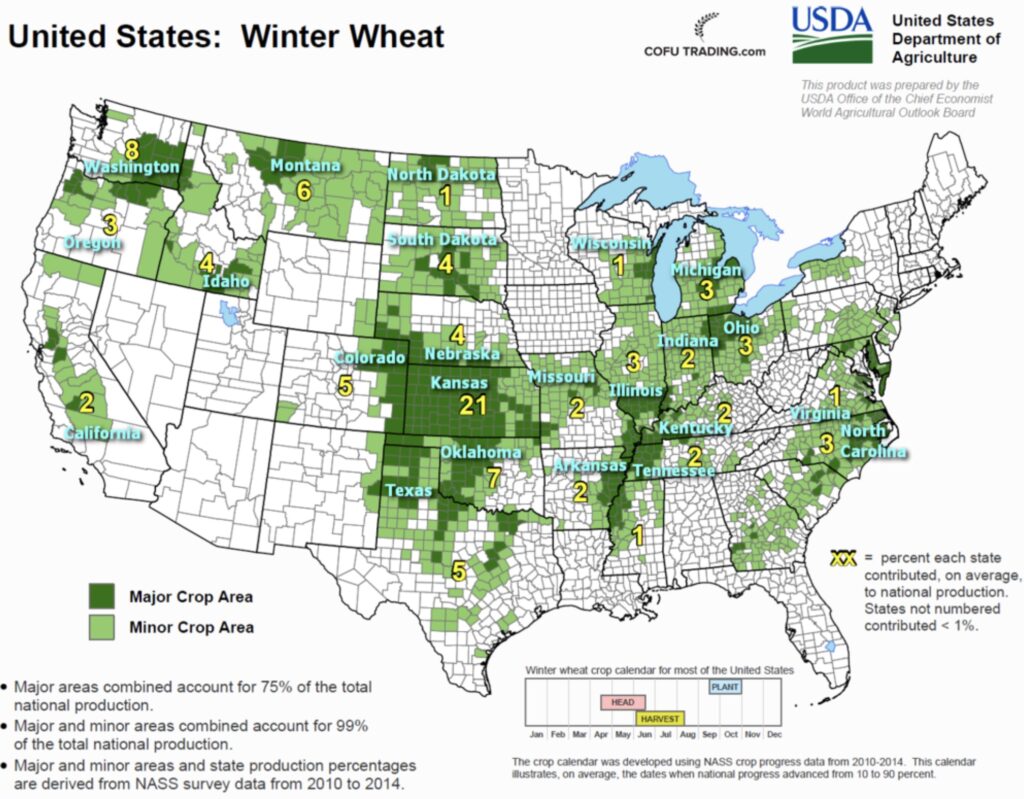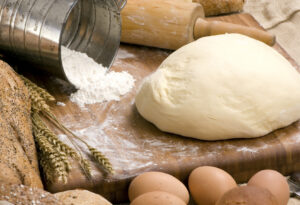Tenuous Winter Wheat Crops Could Become Problematic
Wheat is an essential grain harvest in the overall food chain. Winter wheat is planted in October and harvested the following June and July, however, the U.S. crop this year is in a tenuous position because of severe drought in the plains. Kansas represents about a quarter of the U.S. harvest and is currently suffering through an extended dry season.
Last week, “Kansas Governor Laura Kelly declared a drought emergency, warnings and watches for every county in Kansas on Thursday due to dry conditions causing high fire danger.” (link)

We need to keep an eye on this, and it would be wise to make proactive preparations now for the possibility of a severe shortage. This potential is what has driven the price of wheat futures, and when combined with the issues in Europe’s largest wheat producer, Russia, there’s a very real possibility of a global shortage of wheat.
The early March warnings are beginning to become more important. “The world has grown hugely dependent on Ukraine and Russia for their wheat, a crop used in everything from bread to couscous and noodles. The nations account for a quarter of global trade. They are also cheap suppliers, which makes their exports favorites for importers in the Middle East and North Africa, including in Egypt, the world’s biggest wheat buyer.” (link)
Back to the U.S.A:
March 14 (Reuters) – A worsening drought in the southern U.S. Plains is threatening the region’s winter wheat crop just as the Ukraine crisis dents global supplies.
Some farmers in southwestern Kansas, the top U.S. wheat producing state, have not received much measurable rain or snow since October. Winter wheat is planted in autumn, lays dormant in winter and begins sending up green shoots in spring. Proper soil moisture is critical at this stage for the crop to thrive.
More than half of Kansas was classified as under severe drought or worse as of March 8, the driest conditions since 2018, according to the National Drought Mitigation Center. Severe drought is also covering three-quarters of Oklahoma and more than two-thirds of Texas, both of which also are large wheat producers.
Water woes follow a freak December windstorm that swept away some topsoil in parts of the U.S. wheat belt, damaging some cropland.
U.S. hard red winter wheat represents nearly half of the country’s overall wheat production and is milled mainly for bread flour. A reduced crop could further stoke food inflation that the United Nations Food and Agriculture Organization (FAO) said was the highest-ever in February. The FAO’s Food Price Index averaged 140.7 points last month, a 20.7% increase from a year earlier and surpassing the 2011 record.
U.S. wheat futures soared to the highest levels in 14 years early last week as the Russia-Ukraine conflict pushed two of the world’s largest wheat exporters out of the market, leaving importing countries scrambling for replacement sources.
Meanwhile, the winter wheat crop in China, the world’s largest producer of the grain, is expected to be among the worst ever after heavy rainfall delayed planting. (read more)
 We need to watch this one closely, and it would not be a bad idea to purchase some of your own bread making supplies a little earlier for storage.
We need to watch this one closely, and it would not be a bad idea to purchase some of your own bread making supplies a little earlier for storage.
Wheat, corn and soybeans are the foundation of the U.S. food supply. They are primarily used as ingredients in processed foods, oils, and are fed to the cattle, hogs, and poultry that supply meat and eggs for the American diet. When those grain harvests go up in price, the downstream increase in price is far reaching.




Post a Comment